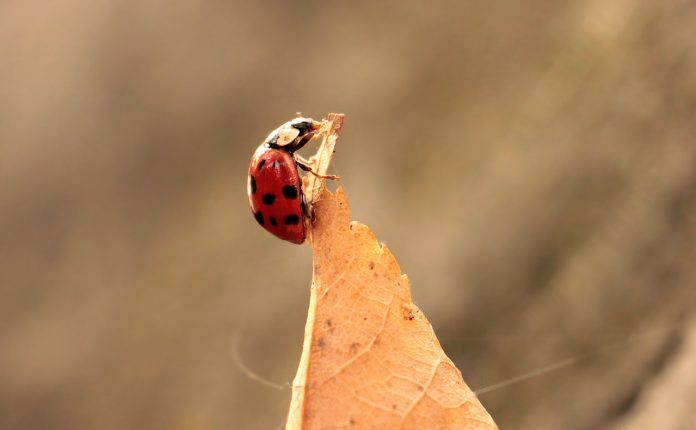Since my wife brought home that spectacular eastern Hercules beetle I described a few weeks ago, I’ve embraced beetlemania.
Given the sheer number of beetles that inhabit the planet, it’s understandable. Beetles, members of the insect Order Coleoptera, occupy virtually every habitat on earth.
By the most conservative estimates, there are about 400,000 species of beetles in the world. Some entomologists believe there could be more than a million.
About 25,000 species live in North America north of Mexico. They range in size from tiny to bigger than a human fist.
Their colors span those of a rainbow, often with hues that rival a spectacular aurora borealis. And they eat everything — many are herbivores, many are predators and some are scavengers.
Species
Some, such as long-horned beetles, have antenna that stretch far beyond their body’s length.
Stag beetles have greatly enlarged, ferocious-looking mandibles (jaws). Look for them in rotting logs and stumps in the woods.
Aquatic whirligigs swim in frenzied circles like whirling dervishes. Some dung beetles make their living by rolling balls of animal feces into which they lay their eggs.
And carrion beetles are nature’s ultimate recyclers. Think of a lifestyle, and there’s probably a beetle living it.
British evolutionary biologist J.B.S. Haldane (1892-1964) is said to have credited God with the planet’s abundance of beetles.
When asked what he could infer about the Creator from his career in biology, he reportedly replied that God must have had, “an inordinate fondness for beetles.”
Whether or not Haldane actually uttered those words, they certainly ring true. Of all the living animal species on the planet, 25% are beetles.
Many of us encounter beetles every day. Japanese, June and potato beetles are attracted to porch lights and often cling to screen doors at the end of a long summer night.
And sometimes we’re confused by beetles’ common names.
Fireflies, lightning bugs, and ladybugs are neither flies, nor bugs. They are beetles.
And so are glowworms, named for their bioluminescent female and larval stages.
Weevils
And then there are the weevils. Of all the 400,000 species of beetles, half are weevils.
The iconic cotton boll weevil is just one. (A boll, by the way, is a cotton plant’s seed capsule.)
Compare that to approximately 10,000 birds and 5,480 mammals. With so many species to choose from, it’s difficult to pick favorites.
Click beetles certainly make the list. Easy to recognize by a thoracic shield with pointed outer edges directed rearward, many click beetles have eyespots on the thorax.
They get their name by their ability to right themselves if placed on their back.
From that position, they can contract thoracic muscles to snap their bodies into the air and right themselves.
The action produces an audible “click” and may startle predators into releasing them.
Predators
Tiger beetles, as the name suggests, are ferocious predators. They chase and track down insect prey. Then they use their powerful mandibles to rip their victims to pieces.
And many tiger beetles sport dazzling iridescent colors. In museum collections, boxes of tiger beetles shimmer and shine like precious gemstones.
Larval tiger beetles are even more brutal predators.
They hide inside a vertical burrow and anchor themselves with abdominal hooks.
When unsuspecting prey wanders too near the mouth of the burrow, the larva lunges out and grabs the victim.
It uses its large, scythe-like jaws to kill the prey, then retreats back into the burrow for a quiet meal.
Bombardier beetles use chemical warfare to defend themselves.
A cocktail of chemicals held in independent abdominal chambers mix in an outer chamber, where a chemical reaction propels a cloud of nasty, boiling spray.
The liquid can burn human skin and leave a scar that may linger for days, so it effectively deters predators.
And larval darkling beetles, commonly known as mealworms, are often sold as fish bait and pet food.
Mealworms are the live, protein-rich food birders buy to feed everything from woodpeckers, chickadees and titmice to bluebirds, mockingbirds, vireos and warblers.
But my all-time favorite beetles have always been Paul, John, George and Ringo. Better make that, “The Beatles.”













